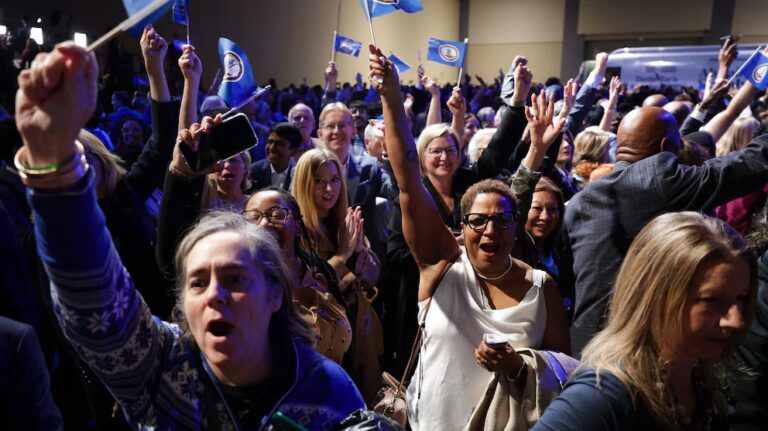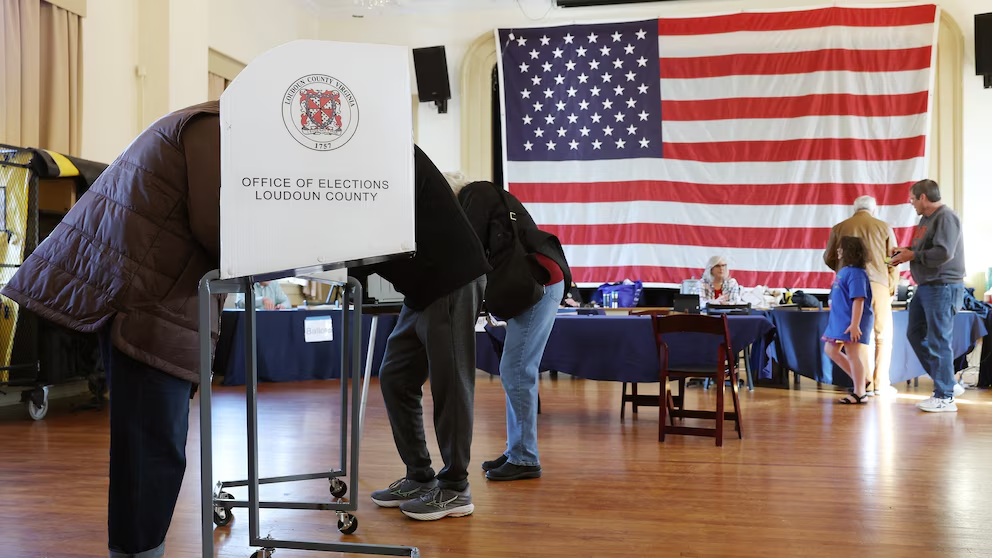
2:45Ballots are being completed by voters at a voting location at the Hillsboro Old Stone School on November 4, 2025, situated in Hillsboro, Virginia. Anna Moneymaker/Getty Images
What are the sentiments of voters in Virginia, New Jersey, New York City, and California toward the nation, the financial system, and various other subjects? Presented here are the details gathered from ABC News exit surveys, managed by SSRS.
Virginia
Critical factors in Democrat Abigail Spanberger's triumph in the gubernatorial contest:
The Economy: Approximately 50% of Virginia voters stated that the economy represented the preeminent concern confronting the Commonwealth, and they endorsed Spanberger by a margin surpassing 20 percentage points, according to ABC News exit poll data.
Independents: Among the segment of Virginia voters, constituting one-third, identifying as independent, Spanberger held a margin, with nearly 60% of independents backing the Democrat and just beyond 40% favoring the Republican. During the 2021 gubernatorial election in the Commonwealth, Republican Glenn Youngkin, the eventual victor, garnered backing from over half of the independents.
Abortion: Approximately 6 out of 10 voters voiced the belief that abortion should be permissible in all or most situations, and approximately 8 out of 10 among them supported Spanberger.
Government Employees: Around 60% expressed that federal governmental cutbacks influenced their household’s financial status; furthermore, by a ratio exceeding 2-1, they favored Spanberger over Republican Winsome Earle-Sears. Spanberger secured majority endorsement from individuals residing in households with federal government personnel and contractors. She equally secured the support of households without links to federal government employment.
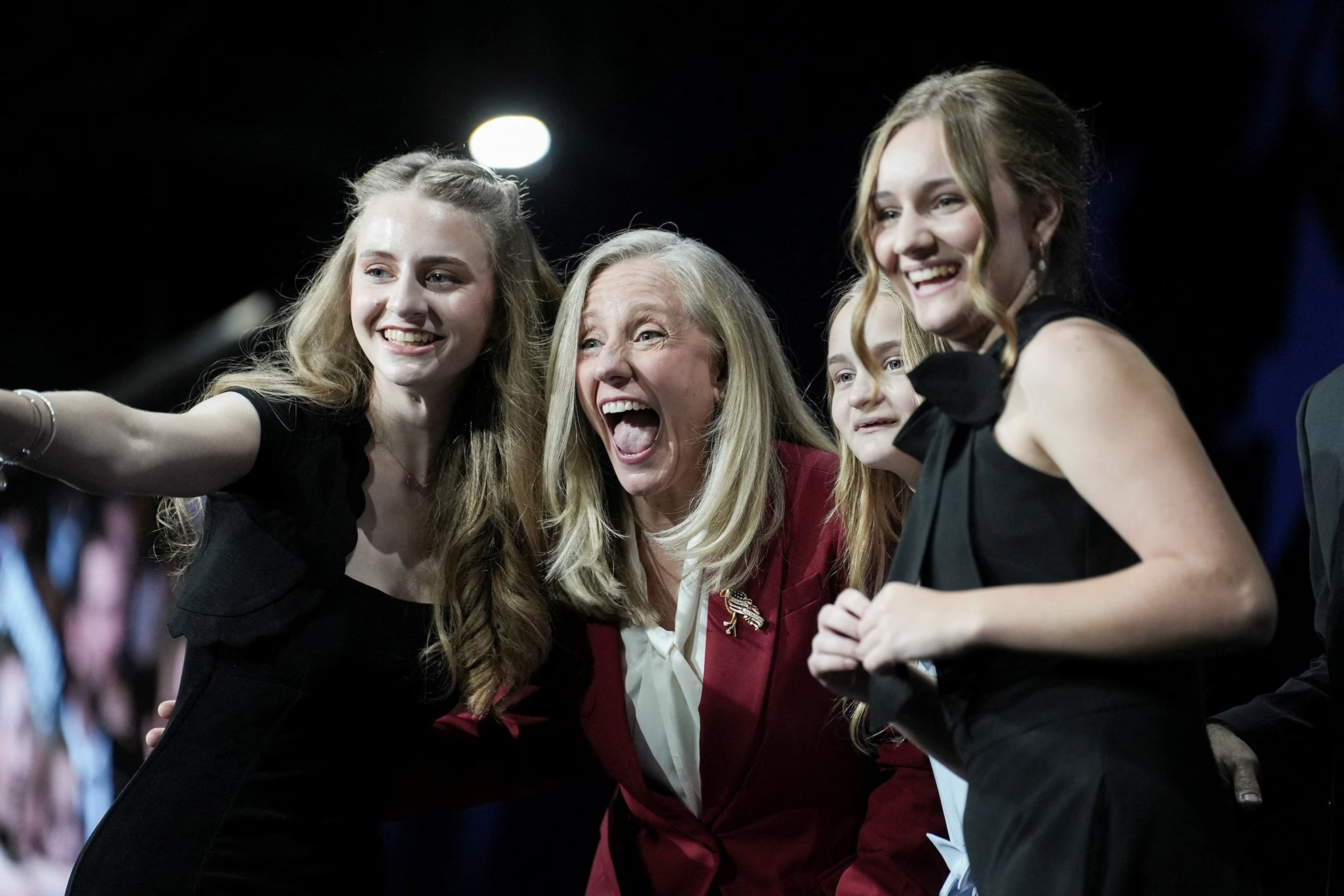
Democrat Abigail Spanberger is seen alongside her family onstage subsequent to her victory address versus Republican Winsome Earle-Sears in the Virginia gubernatorial race held in Richmond, Virginia, November 4, 2025.Jay Paul/Reuters
The majority of Virginia voters suggested that the state’s economy is performing favorably, while only a few indicated that their individual financial circumstances are improving:
Nearly 60% communicated that the condition of the Commonwealth’s economy was either “excellent” or “good,” while 40% deemed the economy as either “not so good” or “poor.” Nevertheless, few Virginia voters expressed that their households were “advancing” financially. Barely exceeding 10% noted their advancement, while approximately 60% specified they were “holding steady,” and nearly a quarter declared they were “falling behind.”
Despite the fact that a majority of Virginia voters articulating the economy’s favorable condition cast their ballots for Earle-Sears, a significantly larger majority, dissenting on the economy’s state, voted for Spanberger. A majority from both contingents, those declaring their financial stability and those reporting regression, opted for Spanberger.
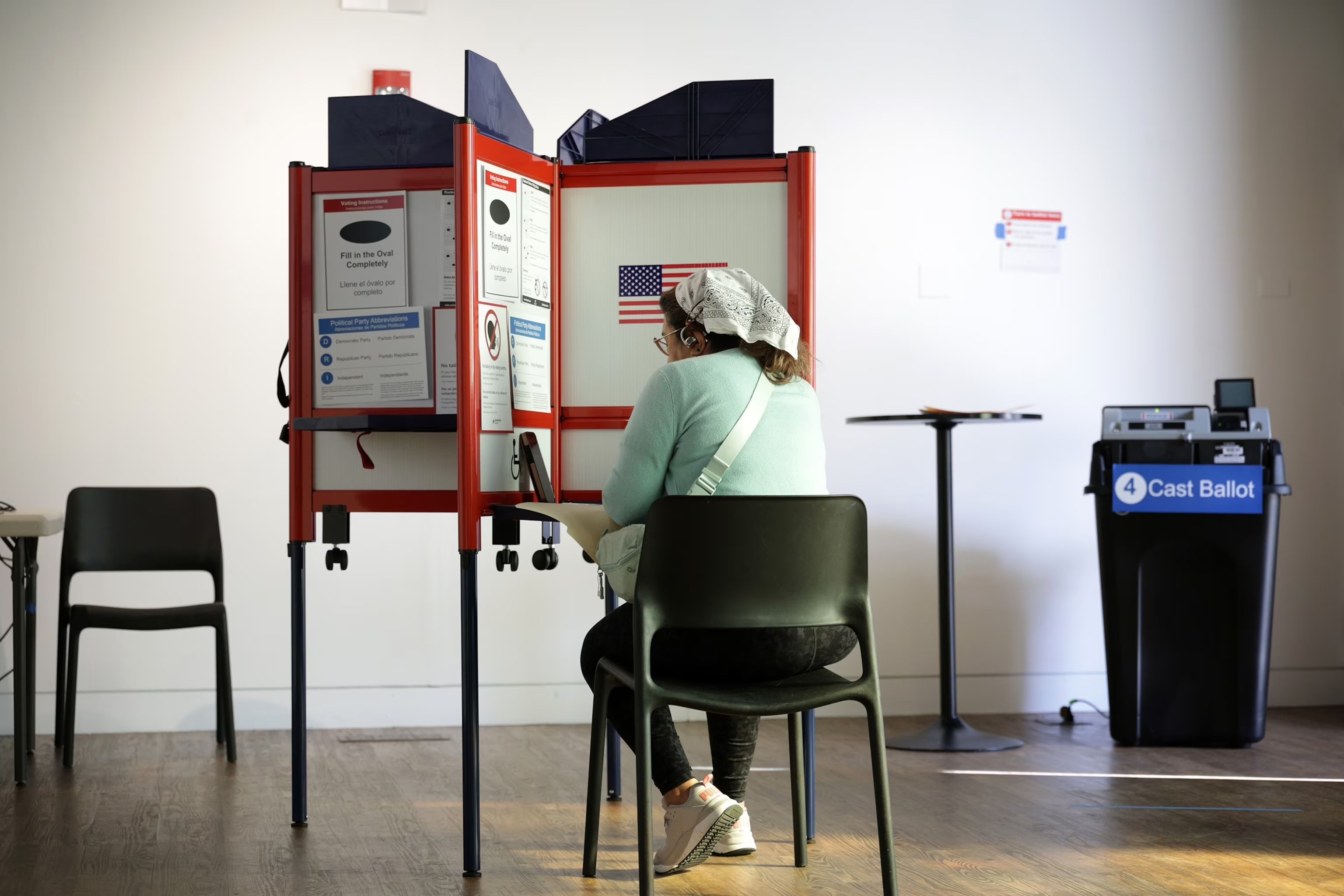
A voter submits her ballot at a voting center, November 4, 2025, located in Arlington, Virginia.Alex Wong/Getty Images
Immigration: Exceeding half of Virginia voters conveyed that the endeavors of President Donald Trump’s administration pertaining to immigration enforcement have “overreached,” and exceeding 90% among them voted for Spanberger.
Gender: Spanberger experienced backing from a bulk of female voters, whereas Earle-Sears had a split among male voters.
Trump approval: Roughly half of Virginia voters indicated severe disapproval of Trump, with virtually all of them endorsing Spanberger. Virginia voters expressing “somewhat disapproval” of Trump were divided in their vote. Considerable majorities of those who approved of Trump supported Earle-Sears.
2024 vote: Almost all of individuals who favored Kamala Harris in 2024 supported Spanberger, whereas just beyond 90% of those who voted for Trump endorsed Earle-Sears.
Age: Spanberger enjoyed bulk support from each evaluated age demographic, exhibiting broader support amidst younger voters.
Race: Exit surveys indicated that roughly 90% of Black voters endorsed Spanberger, alongside approximately two-thirds of Hispanic/Latino voters and approximately 80% of Asian voters. A slight majority of white voters favored Earle-Sears.
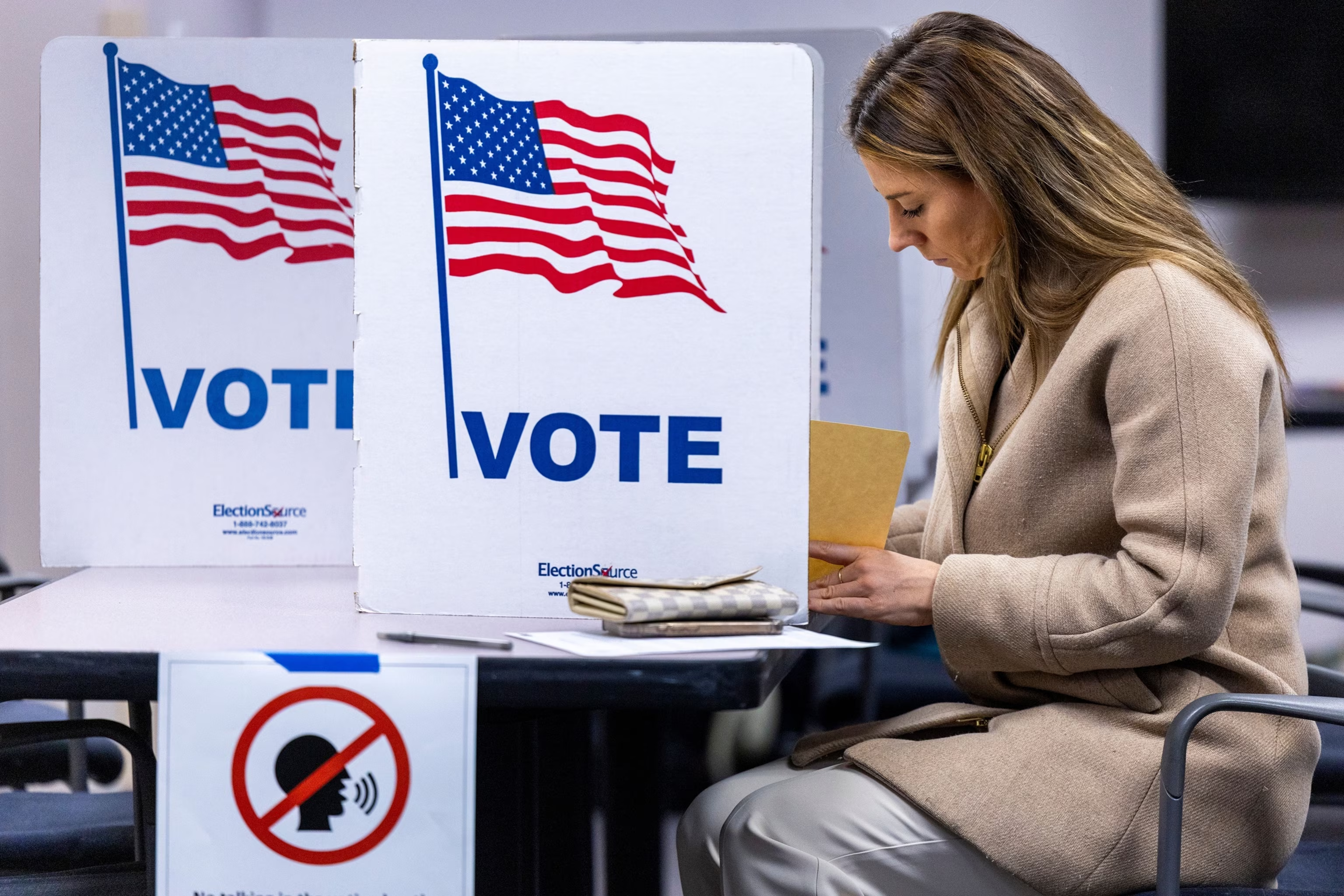
A voter populates their ballot for the 2025 Virginia election situated at the Fairfax County Government Center polling place found in Fairfax, Virginia, November 4, 2025.Shawn Thew/EPA/Shutterstock
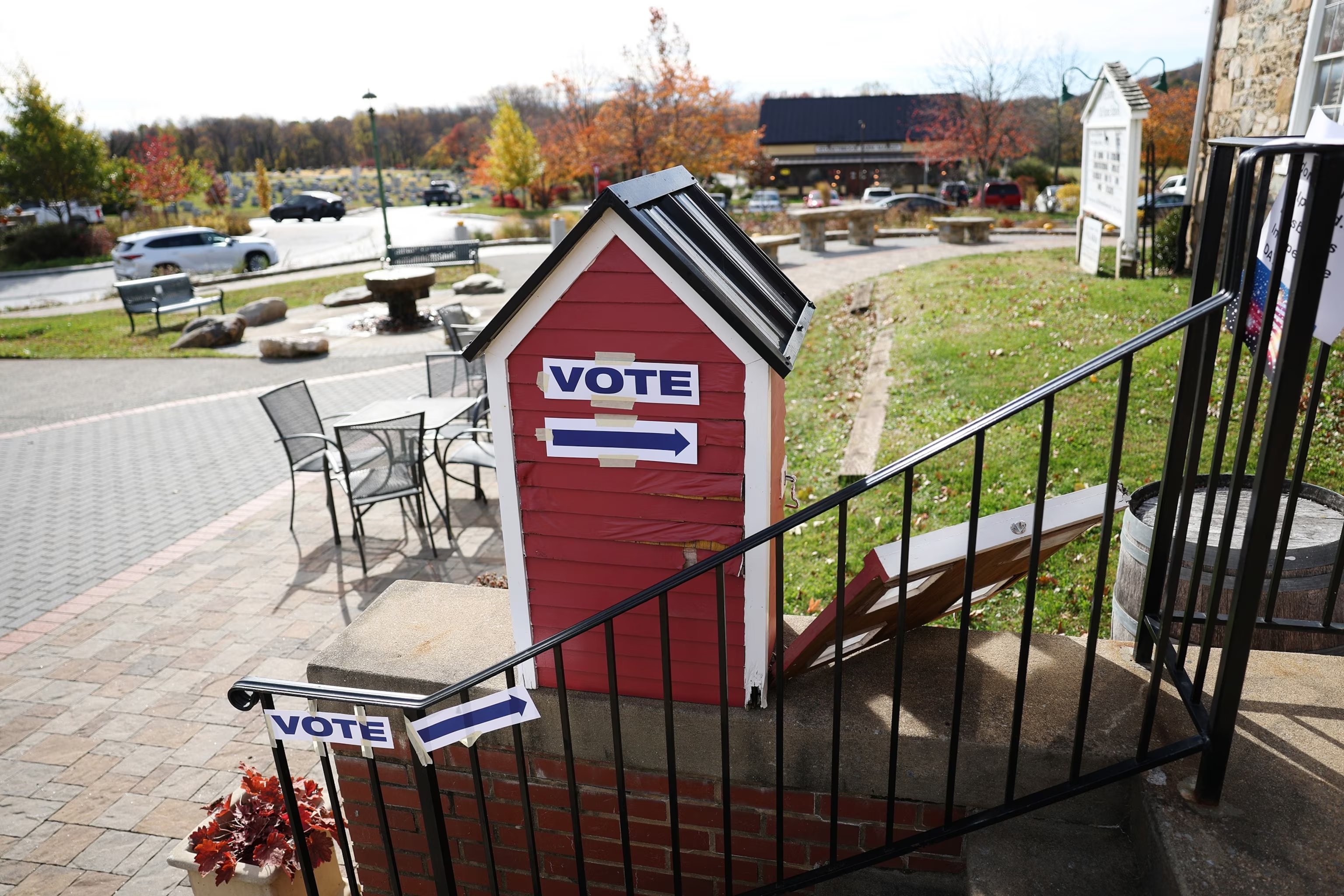
A sign indicates the route to a polling station at the Hillsboro Old Stone School, November 4, 2025, situated in Hillsboro, Virginia.Anna Moneymaker/Getty Images
The majority of Virginia voters hold unfavorable views toward the condition of the nation:
Approximately two-thirds of Virginia voters voiced either discontent or exasperation with the current course of affairs in the nation — encompassing more than a third who expressed exasperation. Exceeding 90% of self-proclaimed “exasperated” voters cast their ballots for Spanberger, and around 60% of “discontented” voters followed suit. One-third expressed either enthusiasm or contentment, and substantial majorities among them voted for Earle-Sears.
New Jersey
Critical factors in Democrat Mikie Sherrill’s success in the gubernatorial contest:
Independents: Exceeding 50% of independents supported Democrat Mikie Sherrill, per exit survey results, alongside nearly every Democrat. Greater than 90% of Republicans backed Republican Jack Ciattarelli.
Gender: Roughly 60% of New Jersey’s female voters endorsed Sherrill, whereas male voters in the state were divided in their voting.
Age: At approximately a 2-1 ratio, a majority of New Jersey voters under 45 endorsed Sherrill, whereas voters 45 and beyond were split almost equally between the Democratic and Republican candidates for the governor’s seat.
Race: Just exceeding half of white New Jersey voters supported the Republican candidate for the governor’s seat, whereas significantly wider majorities of Black, Asian, and Hispanic/Latino voters endorsed the Democratic candidate.
Trump approval: Nearly half of New Jersey voters conveyed severe disapproval regarding Trump’s handling of his presidential duties, with a commanding portion of these voters backing Sherrill. A smaller, but nonetheless substantial majority among those somewhat disapproving of the president also supported the Democrat, whereas sizable margins of Trump supporters endorsed the Republican candidate — albeit comprising a smaller segment of voters.
Taxation and the economy represented the most paramount issues for New Jersey voters:
About a third of New Jersey voters indicated taxation as the predominant issue afflicting the state, whereas roughly another third of voters cited the economy. Similar portions of voters emphasizing taxation supported Ciattarelli, as did voters emphasizing the economy in support of Sherrill. Health care, immigration, or crime were less frequently cited as the leading issue.
Further perspective on New Jersey voters’ perceptions of the economy:
About 60% of New Jersey voters remarked that the state’s economy was performing either “not so good” or “poor,” whereas approximately 40% perceived it as either “excellent” or “good.”
Sherrill garnered support from three-quarters of those expressing a favorable or exceptional state of the economy, whereas Ciattarelli secured the backing of nearly 60% among those perceiving the economy as unfavorable or poor.
New Jersey voters predominantly express negative sentiments regarding property taxes, with approximately 70% characterizing them as “a major problem” in their vicinity. These voters divided their votes almost evenly between the candidates. Just beyond 70% of those indicating property taxes as a minor issue or non-issue cast their ballots for Sherrill.
Additionally, approximately 60% of New Jersey voters voiced electricity costs as “a major problem” in their locale, and these voters were split nearly evenly between the two candidates.
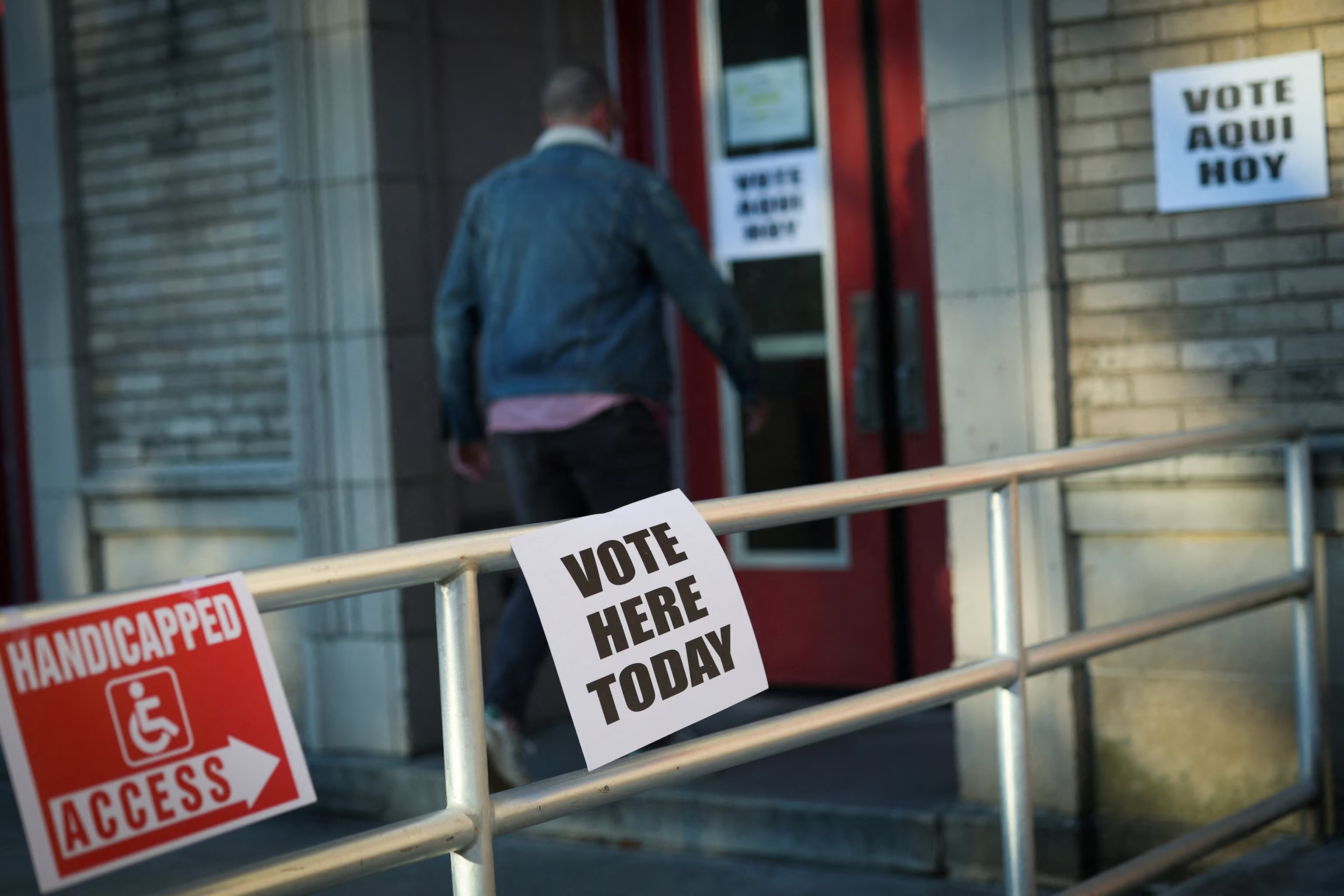
Voters arrive at a voting center early on Election Day in Montclair, New Jersey, November 4, 2025.Mike Segar/Reuters
Additional Considerations:
- Slightly over half of New Jersey voters voiced the opinion that the Trump administration’s actions concerning immigration enforcement had “gone too far,” whereas voters were divided regarding whether the next governor should cooperate with the Trump administration regarding immigration enforcement.
- Almost half of New Jersey voters commented that backing for transgender rights in the community has “gone too far.” Roughly another quarter noted that these rights have not been extended sufficiently, while about a quarter indicated that the support for trans rights has been appropriately balanced.
Characteristics New Jersey voters sought in a gubernatorial candidate:
Exit surveys revealed that around 30% of voters articulated a desire for a gubernatorial candidate capable of enacting required change — and most of these voters supported the Republican candidate. Roughly a quarter stated that they sought a candidate mirroring their values, and approximately 20% favored someone who would advocate for individuals resembling themselves — with most of these voters endorsing the Democrat. Marginally fewer expressed a desire for a candidate characterized by honesty and trustworthiness; they predominantly supported Sherrill as well. Under 10% communicated the importance of a governor exhibiting strong leadership qualities, and they were largely divided in their vote.
Most New Jersey voters hold a negative perspective on the state of the country:
Approximately two-thirds of New Jersey voters shared that they were either “discontented” or “exasperated” with the present state of affairs in the country — encompassing 40% who conveyed feelings of exasperation. Ninety percent of voters articulating exasperation endorsed Sherrill, alongside a smaller majority of those who stated discontent. Almost a third conveyed sentiments of either “enthusiasm” or “contentment.” Most of these voters favored Ciattarelli.
The majority of New Jersey voters believe that political corruption presents a notable concern in the state:
Nine in ten New Jersey voters expressed that they believe political corruption to be an issue in New Jersey, encompassing over half who denoted it as a “major problem.”
New York City
Essential Elements in the Forecasted Victory of Democrat Zohran Mamdani in the Mayoral Election:
Age: Mamdani maintains the backing of a majority of voters under 45, while those in the 45-64 age group are virtually divided between Mamdani and Independent Andrew Cuomo, with an even lesser share for Republican Curtis Sliwa. Cuomo garners support from more than half of those 65 and older, with over a third choosing Mamdani.
Religion: Per exit polling, Jewish voters in New York City favor Cuomo over Mamdani at a 2-to-1 ratio. Cuomo is also preferred by more Catholic voters compared to Mamdani. Likewise, Cuomo edges out Mamdani among Protestant and other Christian voters. Mamdani receives substantial support from voters with no religion or another religion. There was an insufficient sample of Muslim voters to detail their voting preferences precisely.
Israel: The nearly 4 in 10 voters who indicated that the candidates’ positions on Israel were “a major factor” in their votes were nearly split in their support for Mamdani and Cuomo. The specific stance on Israel was not probed in the exit poll.
Party: While almost 6 in 10 voters in the election were registered as Democrats, with approximately two-thirds voting for Mamdani, Cuomo – operating as an Independent – was the preference among Republicans, with around 7 in 10 backing him and only about a quarter opting for the Republican candidate, Sliwa.
Trump approval: About 6 in 10 New York City voters voiced firm disapproval of Trump and backed Mamdani by broad margins. Cuomo was supported by a majority of voters among the smaller portion who somewhat disapproved of Trump. Cuomo outperformed the Republican nominee among the approximate quarter of New York City voters who favored Trump: roughly 7 in 10 favored Cuomo and about 2 in 10 supported Sliwa.
Education: According to exit polling, the majority of New York City voters were college graduates, with most voting for Mamdani. Cuomo had a slight advantage among those without a college degree.
New voters: Almost 2 in 10 voters mentioned it was their inaugural New York City mayoral election, and they favored Mamdani over Cuomo by a margin exceeding 2-1.
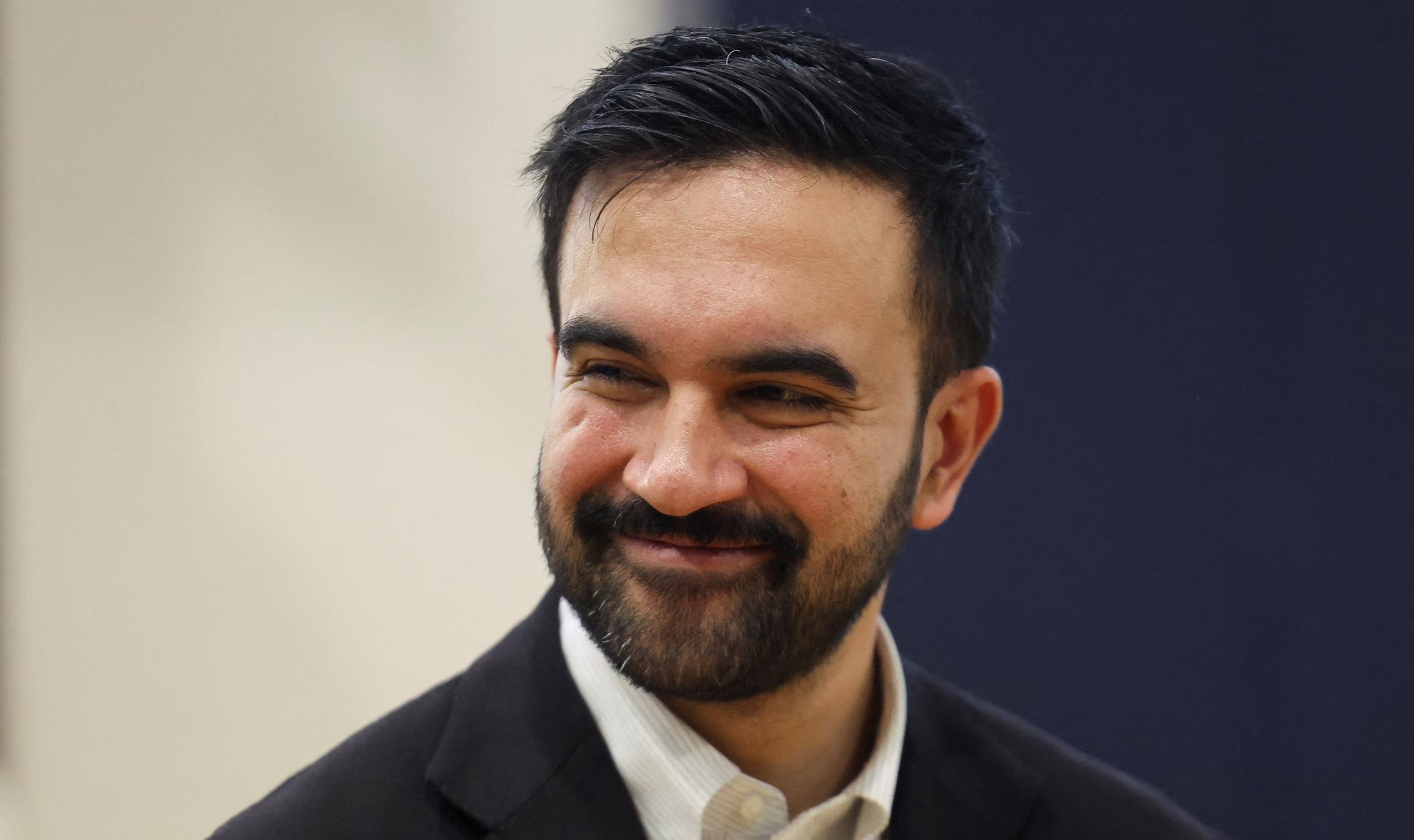
Zohran Mamdani, the Democratic nominee for New York City mayor, awaits his wife Rama Duwaji’s vote during the New York City mayoral elections at an Astoria, Queens voting location in New York City, November 4, 2025.Kylie Cooper/Reuters
Time Period Residing in New York City: Comparatively recent New York City residents were among the most inclined to vote for Mamdani, with roughly 8 in 10 of those inhabiting New York City for under 10 years favoring Mamdani. He also received support from more than half of New York City voters residing there for over 10 years but were not born in New York. Voters born in New York City preferred Cuomo over Mamdani.
Ideology: Approximately a quarter of New York City voters self-identified as “very liberal,” with a vast majority supporting Mamdani. Another approximate quarter considered themselves somewhat liberal and also substantially favored Mamdani. Cuomo found more support among more moderate voters in comparison to Mamdani. Cuomo garnered the preference of a majority among conservative New York City voters.
Renters Compared to Owners: The majority of New York City voters in this election were renters, with roughly 6 in 10 supporting Mamdani. Cuomo garnered support from over half of the approximate 4 in 10 who own their residences.
Living Costs Represent the Top Priority for New York City Voters:
Over half of New York City voters cited the cost of living as the most vital issue confronting the city, exceeding the other issues highlighted in ABC News exit polling, with about two-thirds voting for Mamdani. Under a quarter denoted crime as the most important concern (with two-thirds of these voters opting for Cuomo). Immigration was noted by roughly 1 in 10, with even fewer citing health care or transportation.
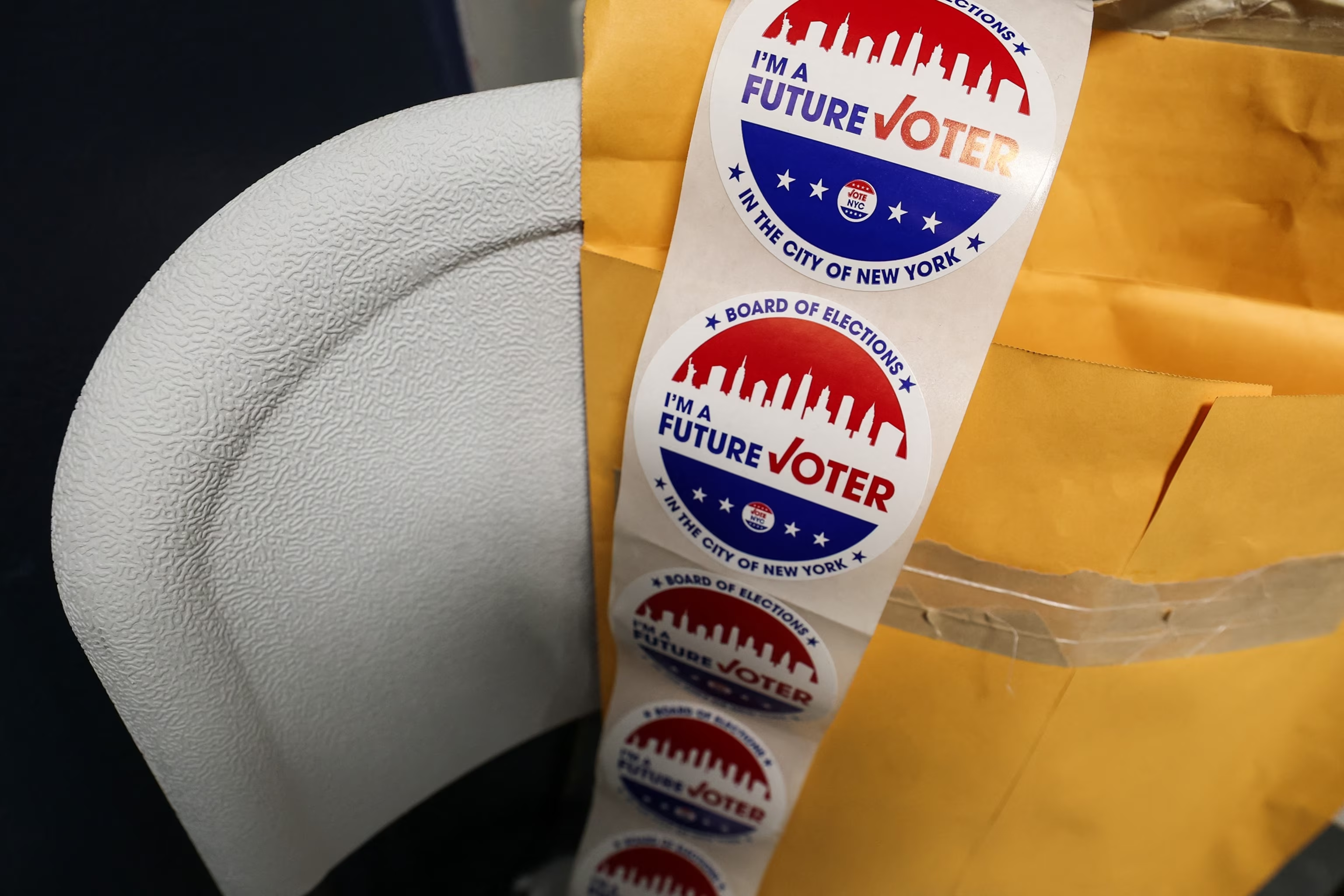
Stickers reading “I’m a future voter” are offered to children as individuals cast their ballots at a New York City polling station, November 4, 2025.Timothy A. Clary/AFP via Getty Images
New York City Voters on the Cost of Living and the Economy:
- Seven in 10 stated that local housing expenses were "a major problem." Around 6 in 10 of them favored Mamdani, while roughly a third opted for Cuomo.
- About two-thirds considered the city’s economy as "not so good" or "poor," while a third labeled it as "excellent" or "good." Mamdani and Cuomo virtually divided the vote among those who considered the economy as subpar or poor. Mamdani held majority support from the third of New York City voters who offered positive economic feedback.
- About 6 in 10 indicated that their families were financially "holding steady," while about 1 in 6 were improving; the vote was roughly divided between Mamdani and Cuomo among both of these factions. Mamdani prevailed with a majority of voters who stated that their families were retrogressing.
- Six in 10 believed that increasing city taxes would be more detrimental to the city’s economy, with a majority of these voters supporting Cuomo. Mamdani was supported by a wide majority of the approximate third who proposed raising city taxes to enhance the economy.
California Proposition 50
Factors Contributing to the Passing of Proposition 50:
- Proposition 50 was supported by majorities of California voters throughout various demographic categories. This included majorities among age demographics, White, Black, Hispanic, and Asian voters, both men and women, and voters with and without college degrees.
- According to preliminary ABC News exit polling, roughly half of California voters shared their exasperation with the direction the country is moving. Proposition 50 was favored by roughly 9 in 10 of them. Another approximate quarter expressed discontent but not exasperation, with a majority also voting yes. Around 1 in 6 noted their satisfaction, and even fewer noted their enthusiasm regarding the state of the county — most of these voters said “no.”
- About 9 in 10 California voters specified that each state congressional district line should be typically drawn by a non-partisan commission rather than the ruling party.
- About 8 in 10 California voters who chose “yes” stated that they voted to counter the changes implemented by Republicans in other states, while about 1 in 6 stated that it’s the best method to draw congressional district lines in California.
About half conveyed they’re upset with the country’s direction:
Half of California voters voiced their frustration with the course the nation is on. Roughly a quarter expressed that they were “dissatisfied, yet not upset.” Close to 1 in 6 mentioned they were satisfied, with fewer stating they were enthusiastic about the country’s circumstances.
California voters on the economy:
Sourse: abcnews.go.com

